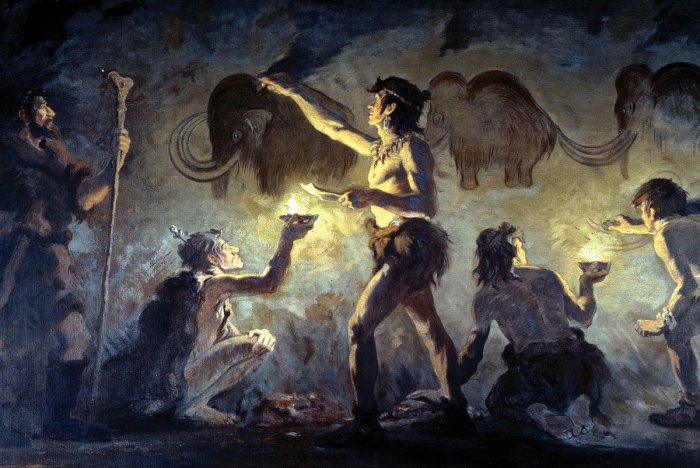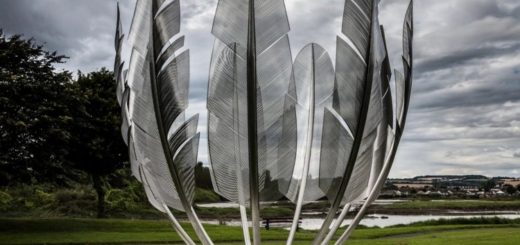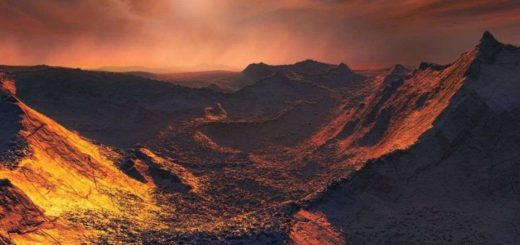Solutrean People: Were First Americans European Stone Age People?
Who the first Americans were remains an unanswered and much debated question. There are several promising theories, but several scientists say conclusive evidence is still missing.
According to the Solutrean hypothesis, the first Americans were Stone Age Europeans who came to North America several thousand years earlier than the Ice bridge theory proposes.

The intriguing Solutrean theory raises a number of questions such as – Where did these Europeans come from and what happened to them? What evidence is there to support this claim?
The most widely accepted scientific theory is that sometime before 14,000 years ago, humans migrated from Siberia to Alaska by means of a “land bridge” that spanned the Bering Strait.
However, there are scientists who question the Land Bridge theory. One of them we find Smithsonian Institution anthropologist and Professor Dennis Stanford and Professor Bruce Bradley from Exeter University who wrote the book Across Atlantic Ice: The Origin of America’s Clovis Culture.
Professors Stanford and Bradley believe that ancient Europeans traveled to North America across an Atlantic frozen over by the Ice Age. They base their theory on stone tools discovered by archaeologists along the north-east coast of the USA.
These ancient tools are between 19,000 and 26,000 years and bear remarkable similarities to those made in Europe.
Professor Stanford said these mysterious Stone Age Europeans were known as the Solutreans and they occupied Spain, Portugal and southern France more than 20,000 years ago.
They paddled along an ice cap jutting into the North Atlantic and they lived like Inuits, harvesting seals and seabirds.
In time, the Solutreans spread across North America hauling their distinctive blades with them and giving birth to the later Clovis culture, which emerged some 13,000 years ago.
According to archaeologist and paleontologist James Chatters modern Native Americans closely resemble people of China, Korea, and Japan, but the oldest American skeletons do not. “This has led to speculation that perhaps the first Americans and Native Americans came from different homelands,” Chatters said, “or migrated from Asia at different stages in their evolution.”
On Chesapeake Bay islands, scientists unearthed blades, anvils and other tools found stuck in soil at least 20,000 years old. Professor Stanford said these ancient blades strongly resemble those found at dozens of Solutrean sites from the Stone Age in Spain and France.
The Solutreans left behind rock art, but no skeletons have been found, so unfortunately no DNA is available to study.
Professor Stanford’s theory has been met with criticism. When Professor Stanford proposed this “Solutrean hypothesis” in 1999, his colleagues rejected it. One prominent archaeologist suggested that Stanford was throwing his career away.
Now, many years later his theory has been revived and more scientists are curious and willing to investigate the Solutrean hypothesis further.
One reason why researchers are still skeptical is because the crossing of the ocean.
“The reason people don’t like the Solutrean idea is the ocean,” Professor Stanford said. No Solutrean boats have been found. But given that people arrived in Australia some 60,000 years ago — and they didn’t walk there — wood-frame and seal-skin boats were clearly possible, Stanford argued.
Scientists also point out that another problem with the Solutrean hypothesis is that at the end of the last ice age, the polar ice cap may not have extended all the way across the Atlantic, leaving iceberg-strewn gaps of open water for the Solutreans to navigate as they headed West for unknown reasons.
Many scientists think the Solutreans hypothesis is based on scant evidence, but it is naturally an interesting hypothesis that is worth exploring if one wants to learn more about the first Americans.
Written by Ellen Lloyd – AncientPages.com
Copyright © AncientPages.com & Ellen Lloyd All rights reserved. This material may not be published, broadcast, rewritten or redistributed in whole or part without the express written permission of AncientPages.com and Ellen Lloyd
About the author:Ellen Lloyd – is the owner of AncientPages.com and an author who has spent decades researching ancient mysteries, myths, legends and sacred texts, but she is also very interested in astronomy, astrobiology and science in general



 Creators of mankind
Creators of mankind Description of “Tall white aliens”
Description of “Tall white aliens” Where they came from?
Where they came from? About hostile civilizations
About hostile civilizations The war for the Earth
The war for the Earth “Tall white aliens” about eternal life
“Tall white aliens” about eternal life Video: “Nordic aliens”
Video: “Nordic aliens” Aliens
Aliens Alien encounters
Alien encounters The aliens base
The aliens base UFO
UFO Technology UFO
Technology UFO Underground civilization
Underground civilization Ancient alien artifacts
Ancient alien artifacts Military and UFO
Military and UFO Mysteries and hypotheses
Mysteries and hypotheses Scientific facts
Scientific facts


















